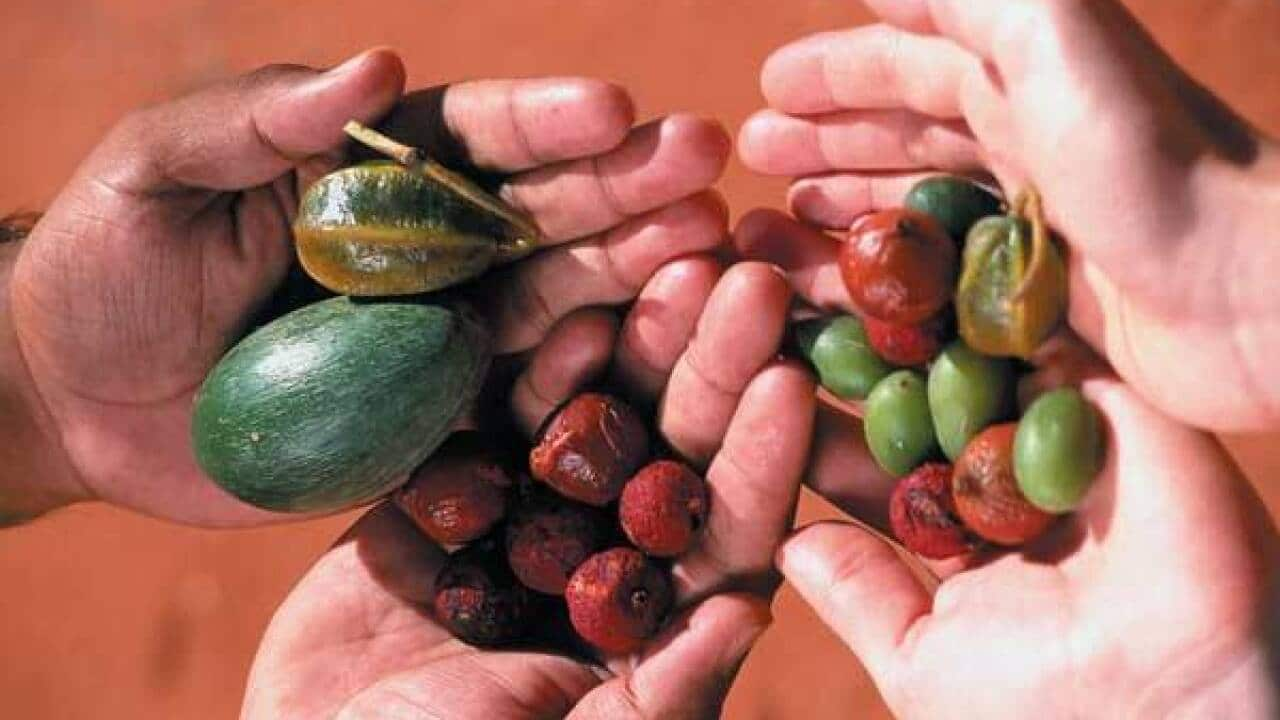Stepping inside one of Food Ladder's cool, leafy growing systems is a stark contrast to the dry, inhospitable conditions outside. In the Northern Territory's , these climate-controlled structures produce enough food to supplement the diets of up to 250 local people with fresh, nutritional fruit and vegetables.
"We have adapted commercial production technologies to suit the harsh conditions in which we're working – it's a lot more than simply a greenhouse," says Food Ladder CEO , who has also helped to set up systems in India, Uganda and Bhutan. "They're specifically designed to withstand challenging weather in the areas they're needed most – remote, disadvantaged communities facing food insecurity and a lack of access to fresh, locally grown produce." Food Ladder's use of hydroponics and sustainable tech to generate food and economic security for disenfranchised communities is a world first. Each climate-controlled system comprises a cyclone-resistant galvanised steel structure and a polycarbonate encapsulating shield, while solar panels with battery storage power and water-treatment technologies mean the systems can operate in arid and isolated conditions.
Food Ladder's use of hydroponics and sustainable tech to generate food and economic security for disenfranchised communities is a world first. Each climate-controlled system comprises a cyclone-resistant galvanised steel structure and a polycarbonate encapsulating shield, while solar panels with battery storage power and water-treatment technologies mean the systems can operate in arid and isolated conditions.

Food Ladder's climate-controlled structures help communities produce food for hundreds of locals. Source: Food Ladder
The organisation is taking a multifaceted approach to tackling food insecurity by not only growing food and generating employment – more than 600 jobs have been created to date – but also by delivering training opportunities to local school students. , Food Ladder launched an education program in Melbourne's Werribee South to provide nutritional food and job-ready skills to Aboriginal and Torres Strait Islander peoples. The sale of produce at an on-site shop as well as to local restaurants and distributors will help fund the program. , a partnership with the Northern Territory Department of Education provides an alternative education pathway for students, who can access fresh produce and develop skills through STEM, nutrition and horticulture lessons with a focus on plants and foods native to the region.
, a partnership with the Northern Territory Department of Education provides an alternative education pathway for students, who can access fresh produce and develop skills through STEM, nutrition and horticulture lessons with a focus on plants and foods native to the region.

Food Ladder uses hydroponics and sustainable technologies to help feed communities – and create jobs and other opportunities. Source: Food Ladder
"The driving and celebration of bush foods has been a remarkable thing to watch," says Kelly, explaining that one of the key imperatives for Food Ladder is that it is Indigenous-led.
They're specifically designed to withstand challenging weather in the areas they're needed most – remote, disadvantaged communities facing food insecurity and a lack of access to fresh, locally grown produce.
"Of course, there are the cultural benefits of introducing bush foods into everyday Australian food culture as a way for Indigenous and non-Indigenous people to learn and appreciate the country's unique ecology and eating practices," she says. "But additionally, from a health perspective, these foods are generally speaking far more nutritionally dense gram-by-gram than what we might get at the supermarket."
In Katherine, the community set up a program offering seasonal bush food boxes, where a selection of the week's harvest – which might include anything from vitamin C-rich rosella to native lemongrass – were sold to support the funding of their Food Ladder system. "There were locals driving around and dropping them off, it was such a great way for everyone to feel involved," she says. "Our hope is that each Food Ladder engages the entire community in one way or another, whether it be through food, training or employment." Kelly says the output and outcomes vary for each location. "In Tennant Creek, the Food Ladder is ultimately focused on training and education rather than being commercial food production-focused, whereas in Ramingining – which is extremely remote and can often get cut off in the wet season – it is more about ensuring there is a commercial quality to supply the local store."
Kelly says the output and outcomes vary for each location. "In Tennant Creek, the Food Ladder is ultimately focused on training and education rather than being commercial food production-focused, whereas in Ramingining – which is extremely remote and can often get cut off in the wet season – it is more about ensuring there is a commercial quality to supply the local store."

Native lemongrass grown in one of Food Ladder's structures. Source: Food Ladder
From a health perspective, these foods are generally speaking far more nutritionally dense gram-by-gram than what we might get at the supermarket.
Kelly says very little is mandated, with each system being independently run and owned by the local community. "Our role is to work with them to understand their objectives and support them in achieving that," she says. "Research indicates that locally owned, multifaceted approaches to health and nutrition is the most effective way to create long-term solutions."
This means an emphasis on multiple bodies being involved, from Aboriginal elders and doctors at the local hospital to school kids harvesting veggies and parents participating in nutrition workshops. "We've seen how setting up these systems can really activate a community, from working side-by-side in a nice, cool environment through to ending up with a tangible, delicious product that people really appreciate," says Kelly. "Each system is different, but ultimately we’re serving the same core human need in every community we work with – access to affordable, nutritious and locally grown produce."









